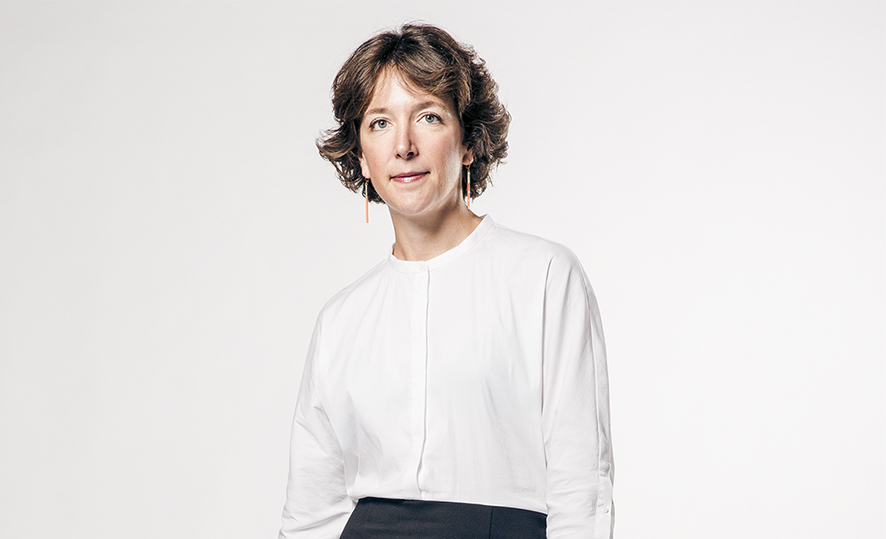
Cécile Poujade, Associate Retail and International Director at Saguez & Partners, describes the rising power of “Hosping” in new commercial spaces in this exclusive commentary for LSA magazine.
Have you noticed? In New York, Paris or Bangkok, the reception at 4- and 5-star hotels is in the midst of a revolution. The first change: you no longer enter into an impersonal, mostly empty 400m2 space, but to the choice of a café, a restaurant, a roomy bar, a coworking space—sometimes all at once. The second difference: you no longer start your visit by making your way to a 20-meter-long marble reception counter, because it’s been replaced by a reception desk that is as small and discreet as possible. Instead, you might begin your stay by having a drink. Since you already checked in and confirmed your arrival in the taxi, you’re free to head directly to your room.
Relaxed, connected, easy and as fast as possible
What happened? Leading hotels have rededicated space to clients and to “city life.” Once conceived as closed off bubbles isolated from urban stressors, large hotels welcomed you with the luxury of space, a counter worthy of a Grand Siècle bank, rare materials and a profusion of polite formalities that delayed the discovery of your room by 10 minutes…In short, the experience was pompous, statutory, sophisticated, long. Now it’s laid-back, connected, easy and as fast as possible
Because the essential is elsewhere: in what you do once you’ve arrived and the impression that you will keep of your experience. Ideally, you will remember the bartender who said hello; the relaxed, lively atmosphere that comforted you after 10 hours of travel; the professionalism of the host who offered you a welcome drink even if you weren’t checked in; the warm, well equipped coworking space; the lovely surprise of the rooftop; and of course the perfect breakfast—a quick cup of great coffee before heading out.
Where’s the link with commerce, you might ask? At Saguez & Partners, we observe people in all their journeys and moments. In the same way that hotels are no longer just rooms for rent, we see that stores are no longer just places to sell products. It was necessary to name this novel use of space and new economic model. We call it HOSPING. The fruitful meeting of hospitality and shopping.
Dare to change commerce
The digital revolution has masked another perhaps more profound change that’s centered around usage and consideration. We consume less to consume better, but life can be difficult due to a lack of time, money, comfort or attention. France’s yellow vest protests are also a crisis of downward social mobility, and not just of purchasing power. The disruption during the Christmas shopping season meant that sales were simply lost, not even made up with online purchases.
Merchants also have difficulties in life, as all foundations shift. We see companies excited about new projects that they don’t always dare to launch, but this is precisely the moment to take action by responding to a destabilizing context with new perspectives. Because this new commerce has already arrived: we’ve already seen it in the attitudes of consumers and therefore in the results, whether good or bad. We don’t always consider the new markers at work with our customers because we don’t yet know how to measure them, and because they are sometimes “invisible.” We have to move from a model based solely on the yield per square meter to a model that values the number of contacts generated by the location, the effect on its catchment area, the media share or even the media revenue generated, the number of experiences it generates, the memories it provokes…
There is no need, however, to wait for the magic moment to act, since it’s clear that the role of the point of sale is evolving. Commerce is no longer a vertical system that imposes a single way to buy. Instead, it’s a circular system that integrates new players, new data, new technologies. In this new circle, the role of the store is to be the guardian of the customer bond both inside and outside of the physical location. In practice, this requires being more considerate, not only perceiving value in transactions but in relationships, or dare we say in something beyond the merely rational, something emotional, poetic.
Seek out new markers
The point of sale is the only place where something more than a simple transaction can take place. It is not for nothing that the pure players are already onto this. Look at MatchesFashion with 5 Carlos Place: live events, free coffee, interactions and surprises.
Take Sézane and her apartment: a unique way to build brand loyalty, with special attention all the way to the bottom of the handbags, fair prices, personalized advice. Let’s examine how Starbucks managed a turnaround after years of standardization with a better product, locations with renewed character, and new formats that coax brand loyalty by catering to customers.
Nature & Découvertes (Nature & Discoveries) remains one of the best examples of the sustainable economic performance of this vision. In addition to being a good business, it’s a company that has meaning with its foundation and expertise as the leading organizer of outings in France. We must seek out these new “markers.” As designers, the often surprising question we ask all our clients is “What is your job?”
What is the know-how behind the product sitting on the shelf? Today people are interested and find value in understanding the underlying process and expertise that went into making it, which is part of what one buys along with the product itself. That’s what lends meaning to what we do and what we buy. That’s what makes us, and keeps us, linked. Shopkeeper and designer? One creates a bond, the other designs it.
Commentary published on LSA
Journalist: Jérôme Parigi